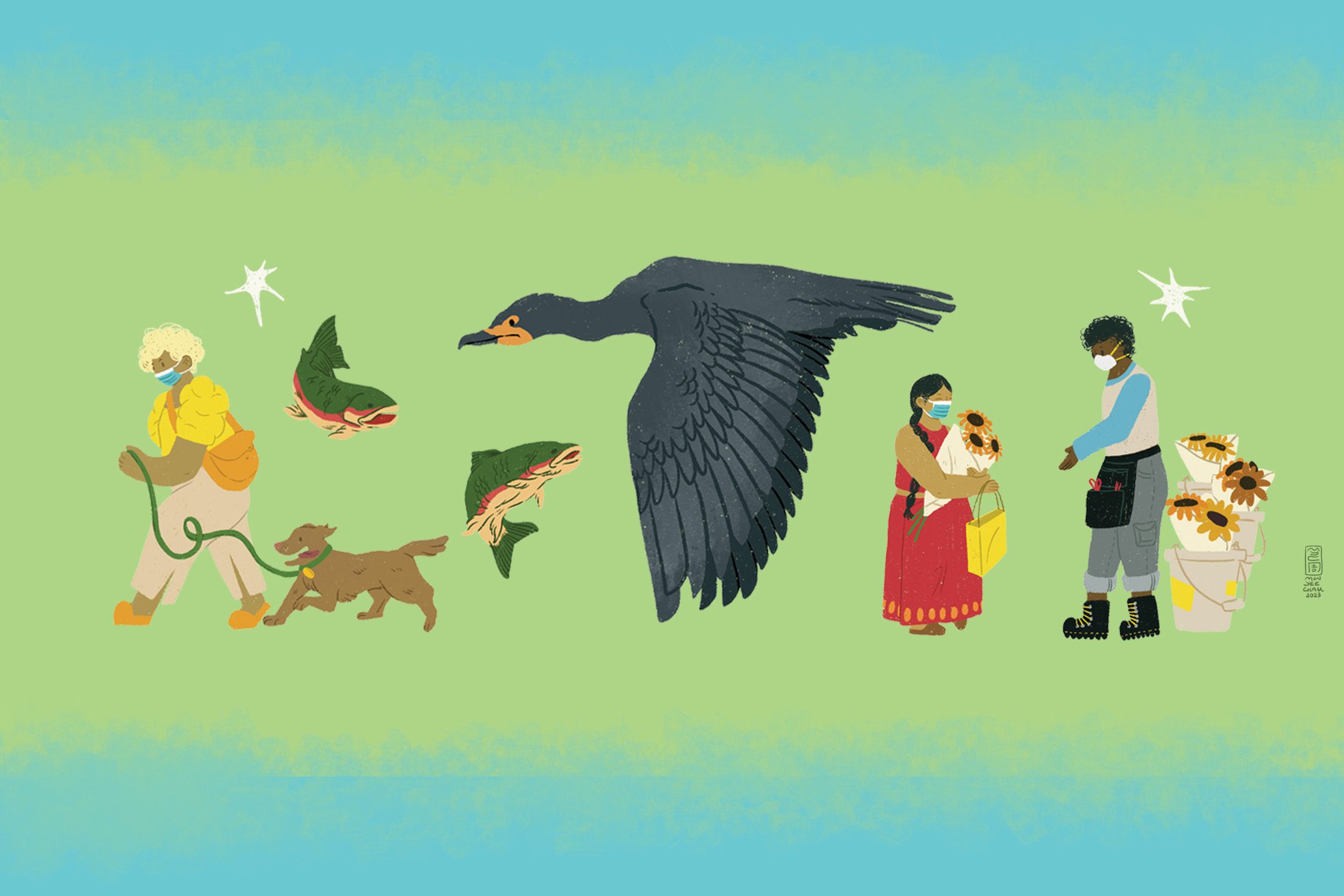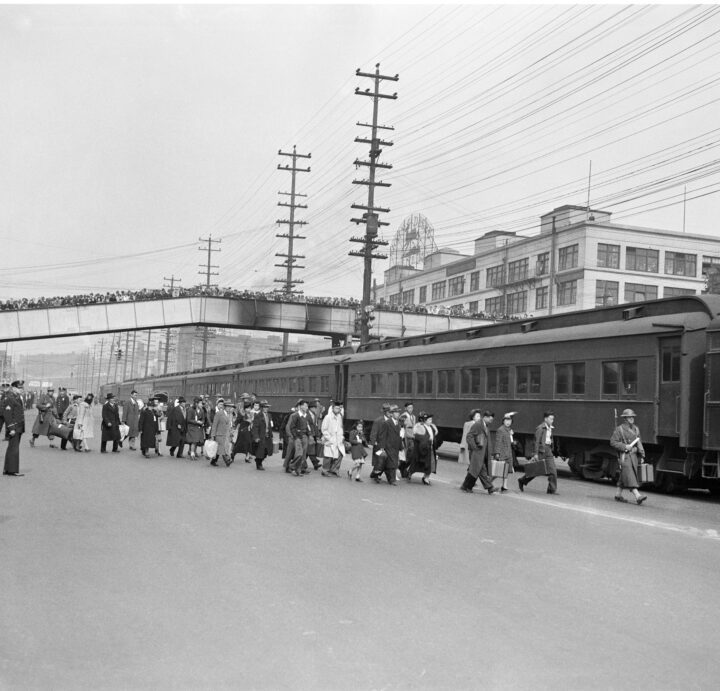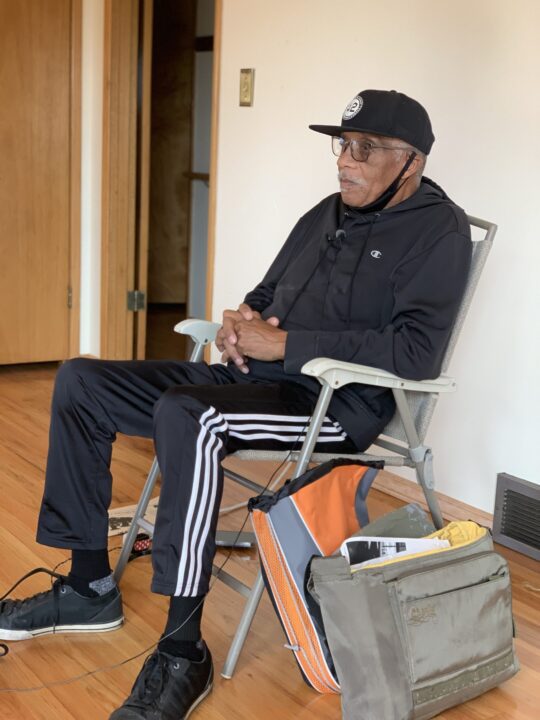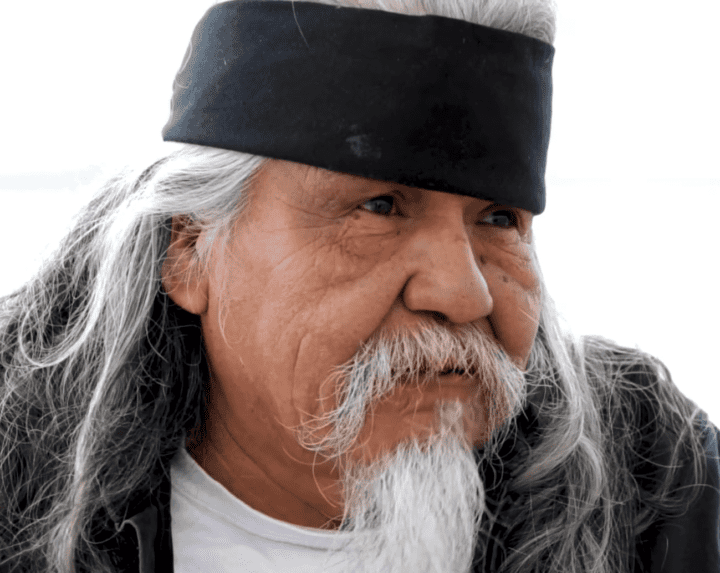Illustration by Monyee Chau.
Making this Place: Black Oral History and the Waterfront
This article, written by Valerie Schloredt, tells the story of Friends of Waterfront Seattle’s partnership with Wa Na Wari during the 2020-2022 Black Spatial Histories Institute
Over the years, the waterfront has served as the entry point to immigrants and refugees, a place where many communities have found opportunities for commerce, and it has also been a place of hardship and exclusion.
In 2023, Friends of Waterfront Seattle sponsored an issue of the International Examiner to shine a light on our waterfront’s unique and storied history. This article, written by Valerie Schloredt and published as part of that IE issue (pages 12 and 13), tells the story of Friends of Waterfront Seattle’s partnership with Wa Na Wari during the 2020-2022 Black Spatial Histories Institute.
History is selective, says Jill Freidberg. “The histories that are preserved, that are valued, the voices that are valued, leave out a great deal.” As a documentary filmmaker and oral historian, Freidberg preserves narratives that might otherwise be obscured or erased. At Wa Na Wari, the Black cultural center Freidberg co-founded in Seattle’s Central District, she’s learned how people in this once-redlined, now-gentrifying neighborhood created programs and innovations that rippled out to benefit and shape all of Seattle. “These are really important narratives,” she says, “that the whole city could be learning from.”
The Seattle Black Spatial Histories Institute (SBSHI) is an oral history training program at Wa Na Wari that aims to collect these important narratives, including stories about Black and Indigenous people on the waterfront. This is history you didn’t learn in school, says Marie Kidhe, director of community relations for Friends of Waterfront Seattle, which is supporting the project. They’re narratives that “center multicultural collaboration so that folks can understand people have been here at the waterfront. They’ve been on the waterfront and doing business and living and thriving and having ownership in the waterfront.” She believes presenting these stories will help displaced communities “understand their ownership of the waterfront, and in particular Waterfront Park, so that they’ll feel welcomed and understand that the space is just as much theirs as anyone else’s.”
Sierra Parsons, one of the Institute’s first cohort of oral history fellows, came to the Institute from a community organizing background rooted in the Rainier Beach neighborhood. She’s grateful for the insight she gained from interviewing longshore workers about their jobs and Black labor organizing on the waterfront. “It really helped to better orient me to what being a port city means and what it meant for Black folks over the last 100 years. Coming into the project, I didn’t know a lot about labor unions, the history of that organizing in Seattle, and the roles that Black folks played in moving unions forward and giving workers better rights. And I also didn’t fully understand how Black folks were excluded from the workforce on the waterfront for so long.”
Parsons’ interview with Suquamish elder Marilyn Wandrey, who has Black and Indigenous heritage, provided another rich perspective. “As an Indigenous person, and as a tribal elder, her experience is so different from how the waterfront is explained by some of the longshoremen that I interviewed. Like her description of being the captain of the Raven canoe and seeing huge container ships passing by, coming so close that people in the canoe thought they were near death.”
Ricky Reyes knew something about organized labor before becoming a SBSHI fellow–his father had a union job and Reyes majored in public affairs in college. But the oral history interviews offered him unique insights: from the Farrisons, a multi-generational family of dock workers in ILWU (International Longshore and Warehouse Union), and from Gabriel Prawl, the first African American president of ILWU Local 52. “I think the big thing with oral history is that there’s a pretty specific focus on spatiality. A lot of times folks will ask in interviews, ‘What happened, when did that happen?’ But with oral history, we got to dive deep into really understanding what it looked like and what it felt like. And what was important about being in the union hall in the ‘90s or being by the docks in the ‘60s and ‘70s.”
The first SBSHI fellowships began during COVID-19 social distancing, so training was virtual in the first year of the two-year program, says Freidberg. That was a disadvantage in loss of in-person learning but something of an opportunity, too, as the first cohort of trainees did online training workshops with eminent Black historians from around the country, “people who have been doing really serious oral history work for a long time.” Among the experts giving workshops were Kelly Elaine Navies of the Smithsonian African American Museum, Adrienne Cain Darough of Baylor University, and scholar-playwright Nikki Yeboah, who has just joined the University of Washington from San Jose State.
As well as taking workshops, the fellows read theories and methodologies of oral history and practiced interviewing techniques before going out in the field. Reflecting on the skills she honed through the fellowship, Parsons says, “I realize I actually listen differently now. When people are talking, even in conversation, I feel more attuned, almost, after being trained in oral history.”
Now the interviews she and Reyes did are ready to be presented to the public at “Tidelines to Timelines,” a storytelling event September 17 on Pier 62 hosted by Friends of Waterfront Seattle in partnership with Washington Trust for Historic Preservation, Wa Na Wari, Black Heritage Society of Washington State, Sea Potential, and Wing Luke Museum, with funding support from 4Culture. A waterfront histories library will launch on the Friends website this fall, and there will be an SBSHI exhibition of the cohort’s work at Wa Na Wari in November. There are even plans for a zine by artist Eboni Wyatt based on the oral histories.
Both Reyes and Parsons plan to carry on doing oral history, and have new related projects lined up already. As the cycle continues with the next cohort of fellows, Reyes welcomes the capacity-building built into SBSHI’s programs, “where there will be more folks who are able to collect specifically Black history–about us, by us, and for us.”
In a dramatically growing city with major development and rapid change, it can be difficult to remember altered places and what living there was like even a few years ago. Kidhe stresses the importance of attaching history to stories of lived experience in a place–even when those places have changed due to gentrification and displacement. “Our memories are based in place and space,” she says. She grew up in the Central District, and says “I know how that feels, to now look up and see so many places that were so impactful in my life no longer exist, and sometimes struggle trying to remember why this location is so special to me, or what was here at one time.”
Reyes says that every story he and Parsons collected mentions or represents many other people who worked on and defined Seattle’s waterfront. His hope is that listeners “just get an understanding of who some of those people are who made the waterfront what it is today.”
More Waterfront Histories






